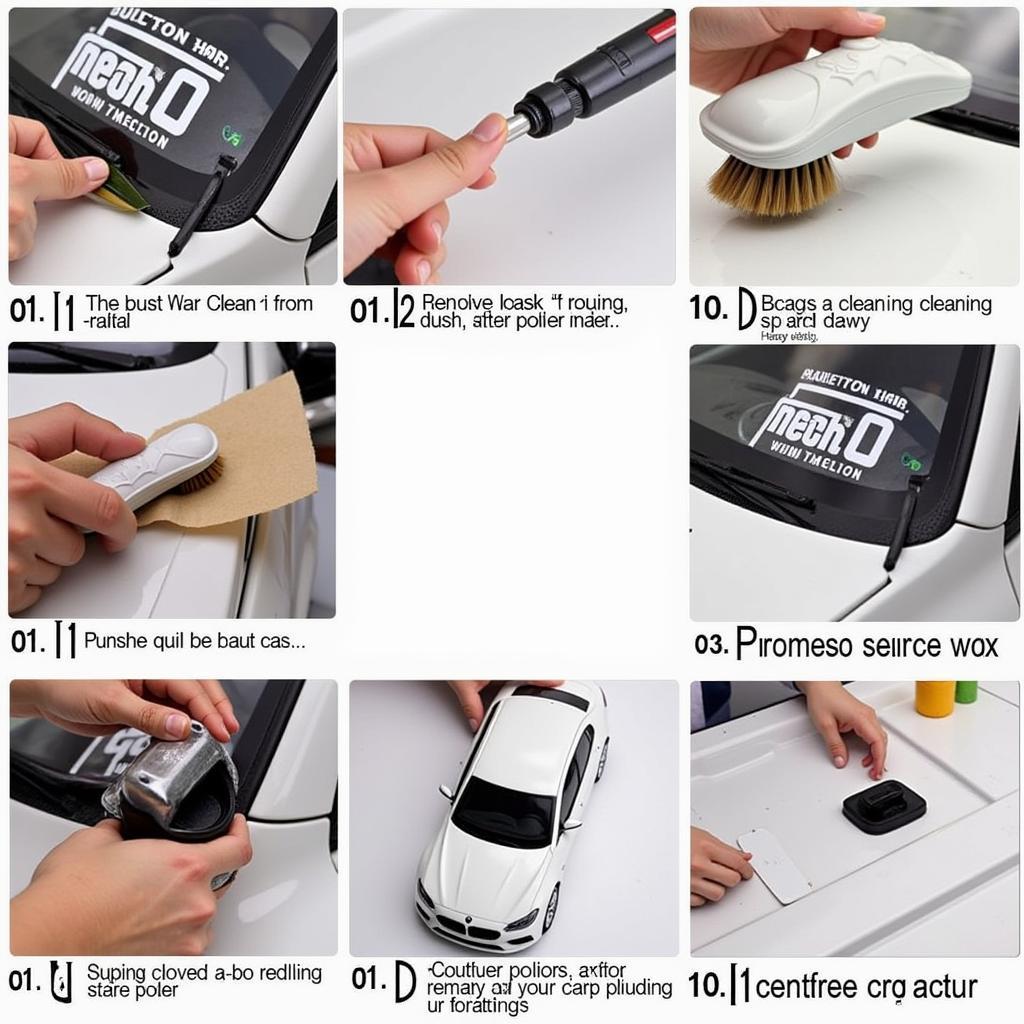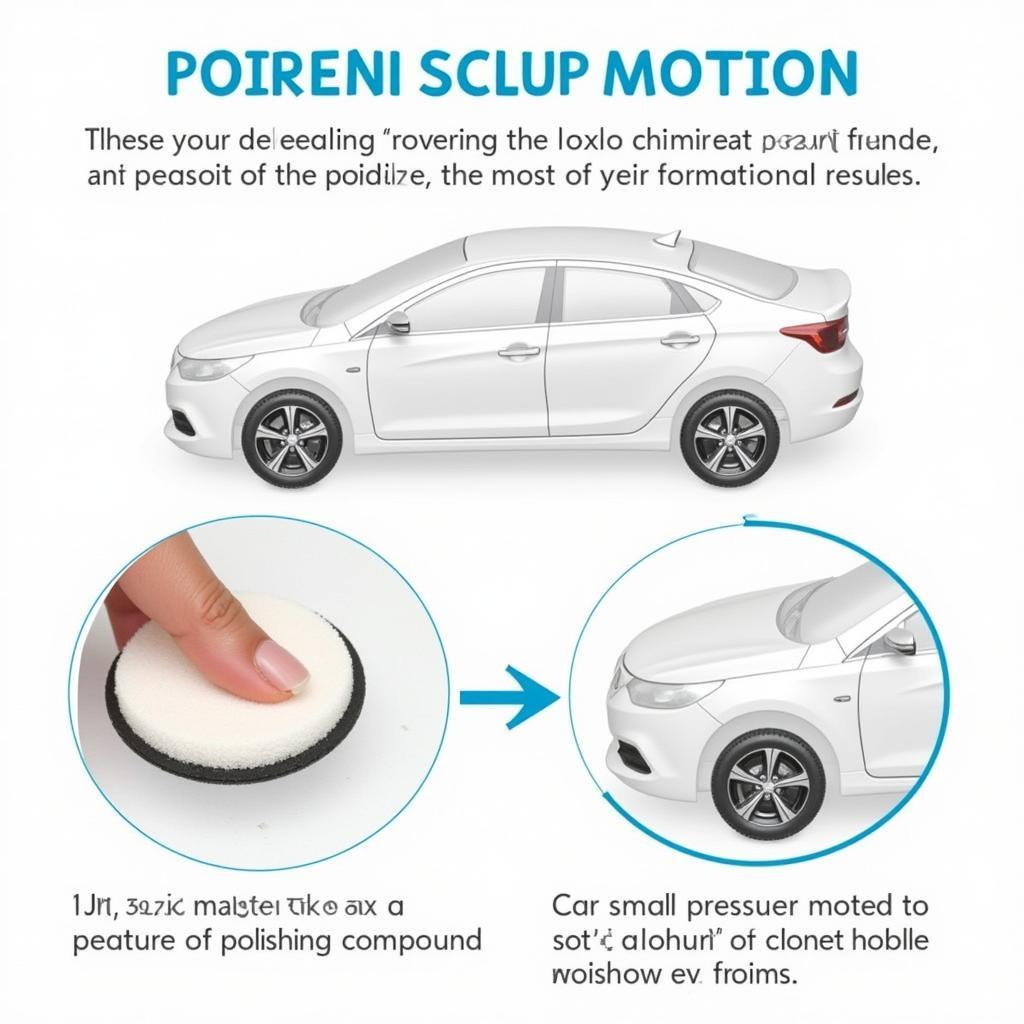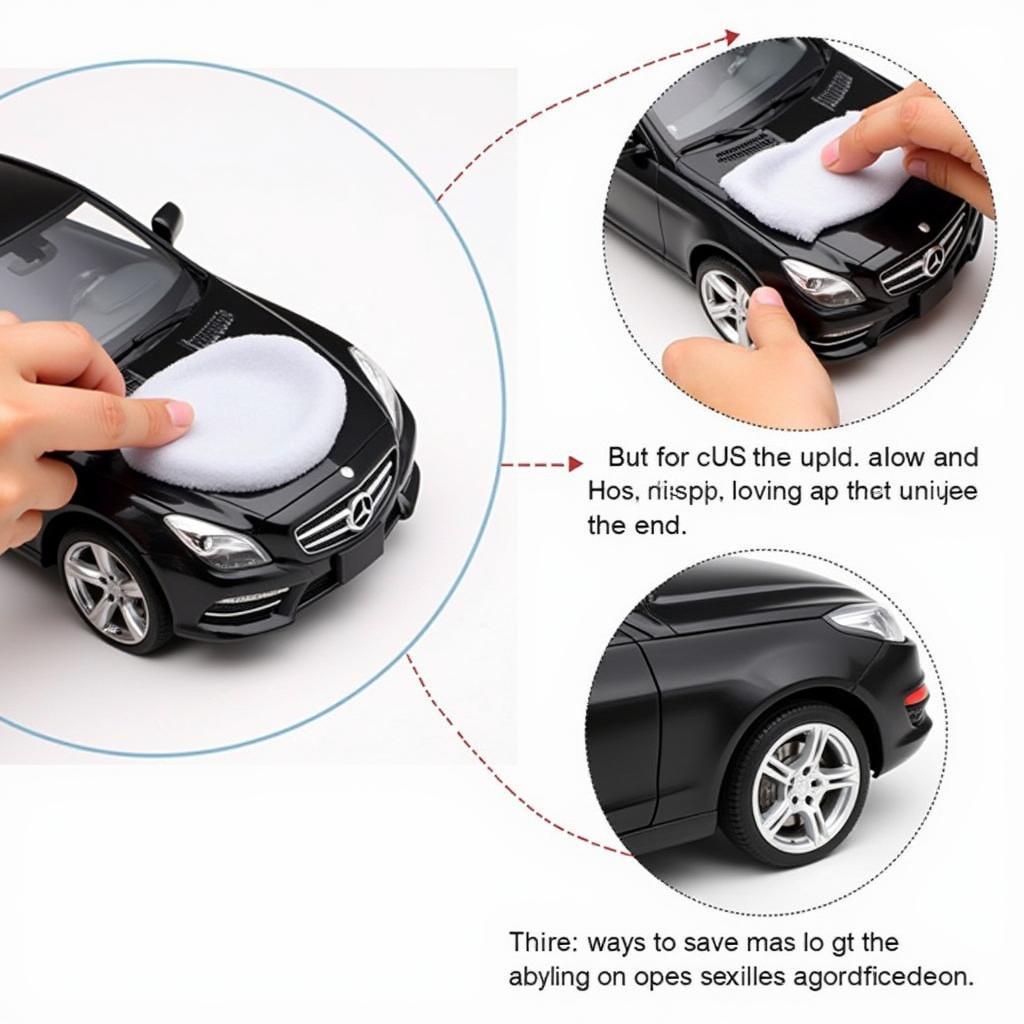Detailing the paint of a model car can transform a good-looking miniature into a show-stopping masterpiece. It’s a delicate process that requires patience and the right techniques, but the results are well worth the effort. This guide will walk you through How To Detail Paint Model Car like a pro, from preparation to the final polish.
 Preparing a Model Car for Paint Detailing
Preparing a Model Car for Paint Detailing
Preparing the Canvas: Cleaning Your Model Car
Before you even think about touching your model car with polish, it needs to be impeccably clean. Dust, fingerprints, and even tiny hairs can interfere with the detailing process. what to do before car detailing explains this crucial first step in more detail for full-sized cars, many of the principles apply here as well. Use a soft-bristled brush, like a makeup brush, to gently remove dust and loose particles. For stubborn grime, use a mild cleaning solution specifically designed for model cars, or a diluted solution of dish soap. Ensure the model is thoroughly dry before proceeding.
Polishing for Perfection: Enhancing the Paint
Polishing is where the magic happens. This step enhances the paint’s gloss and removes minor imperfections. Choose a fine-grit polishing compound specifically designed for model cars. A little goes a long way; apply a small amount to a soft applicator pad and work in small, circular motions. Avoid applying too much pressure, as this can damage the delicate paint. how much you make detailing cars offers insights into the professional detailing world, highlighting the importance of precision and care – principles crucial for model car detailing as well.
 Correct Polishing Technique for Model Cars
Correct Polishing Technique for Model Cars
How do I choose the right polishing compound for my model car?
The right polishing compound depends on the type of paint on your model car. Enamel paints generally require a different compound than lacquer paints. Always consult the paint manufacturer’s recommendations or seek advice from a hobby shop expert.
Sealing the Deal: Protecting Your Hard Work
Once you’re satisfied with the polish, it’s time to seal and protect your work. A clear sealant or wax will add an extra layer of shine and help prevent dust and fingerprints from adhering to the paint. Apply the sealant thinly and evenly, using a clean applicator pad. Allow it to dry completely before handling the model. Remember, like detailing a full-sized car’s engine bay, as detailed in how to detail a car engine bay, meticulousness is key for a pristine finish.
What’s the difference between a sealant and wax?
Sealants are typically synthetic and offer longer-lasting protection, while waxes provide a warmer, deeper shine. Both offer excellent protection, so the choice often comes down to personal preference.
 Applying Sealant to a Model Car
Applying Sealant to a Model Car
How to Detail Paint Engine Bay on Model Car: A Focus on Detail
Detailing the engine bay of a model car takes the process to another level. It’s a test of precision and patience, but the results are truly rewarding. Check out our dedicated guide on how yo detail paint engine bay on model car for a comprehensive walkthrough. Similarly, how to detail paint engine bay on scale model car provides specific tips and techniques for scale models.
Conclusion
Detailing the paint of a model car is a rewarding process that can elevate your miniature to a work of art. By following these steps and exercising patience, you can achieve a stunning, professional-looking finish. Remember, attention to detail is key to how to detail paint model car effectively.
FAQ
- What type of brush should I use for cleaning my model car?
- Can I use regular car polish on a model car?
- How often should I detail my model car’s paint?
- What’s the best way to remove fingerprints from my model car?
- How do I prevent dust from settling on my model car?
- What’s the difference between polishing and waxing?
- Where can I find detailing supplies specifically for model cars?
Need further assistance? Contact us via WhatsApp: +1(641)206-8880, Email: [email protected]. Our customer support team is available 24/7.

Leave a Reply